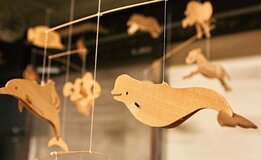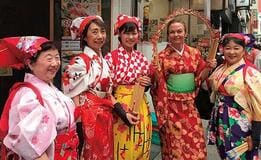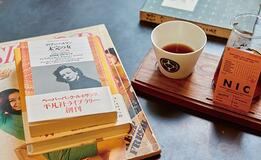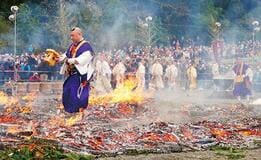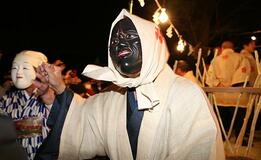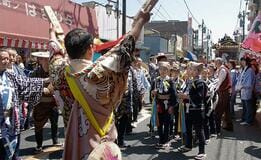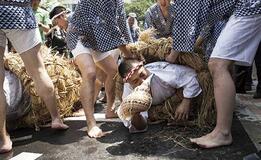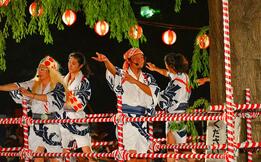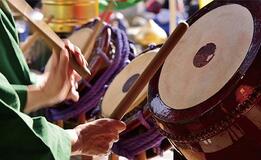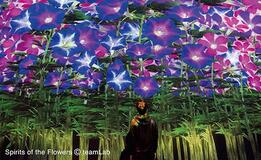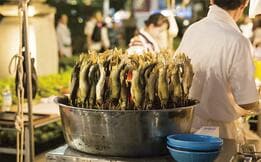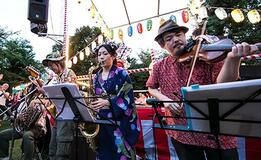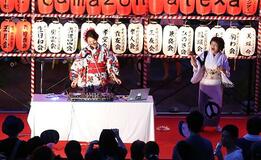【Vol.32】Popular YouTuber “Currently Hannah” introduces exciting Tokyo festivals
Tokyo has all kinds of festival (matsuri), with summer festivals such as the Bon Odori or those featuring portable shrine floats (mikoshi) being probably the best-known examples. However, a huge variety of festivals happen in Tokyo year-round, offering visitors a chance to view vibrantly colored leaves in autumn, throw beans in winter, and more. Hannah went to the Mt. Takao Autumn Leaves Festival held on Tokyo’s Mt. Takao in November.
In addition to brilliant autumn foliage, the Mt. Takao Autumn Leaves Festival offers various concerts and performances as well as beverages by local breweries, and the like. Once there, Hannah also enjoys taking in the taiko drum performance in the event space. For her, these musicians, who use their entire bodies to produce their sound, showcase a different kind of dynamism than usually seen in instrumental performances.
The Mt. Takao cable car ascends and descends through what looks like a tunnel of countless vibrantly colored leaves that cover the mountain. Hannah says that she was able to truly enjoy Japan when doing things like riding the cable car, visiting the temple, and eating dango sweets from street stalls. But what made a lasting impression on her was the sight of the sunlight streaming down through the red leaves. The brilliant dazzle through the trees makes for a blaze of rich seasonal color.
“The area had a magical beauty,” she says.
How does granular rice
turn into sticky rice cake...?!
Hannah’s next stop was to see daita mochitsuki, an age-old way of making rice cakes. The event took place at Daita Hachiman-jinja Shrine in Setagaya City on January 19. A Shinto ritual precedes the rice cake making (mochitsuki), but ordinary people then join in and eat the rice cakes made here. The song sung while making rice cakes, “Mochitsuki Uta,” is another tradition passed down since ancient times. It so happens that cakes and dango sweets are a big favorite of Hannah’s. So how did she feel the first time she saw a live mochitsuki performance?
“It’s great fun watching those six men all pounding the rice in turns without ever hitting each other!”
Daita mochitsuki is a traditional task featuring six to eight people making rice cakes together. When Hannah visited, a group of six men was pounding the rice, each in turn; because a number of people doing it while the rice is still hot is quicker than just one person doing it.
Taking place in Setagaya City, close to the center of Tokyo, daita mochitsuki is very much an urban festival. And when it comes to the feeling of participating in an urban festival, here’s what Hannah had to say:
“If you want to experience Japanese culture in the heart of the city, Tokyo festivals are perfect. Anyone can experience Japanese history and tradition here, and I mean everyone: young people, seniors, Japanese people and those from other countries.”
Incidentally, when watching the mochitsuki, there was just one thing that Hannah found a little curious. That is:
“How can something so sticky come from grains of rice?!”
And sure, there is something a little mysterious about how grains that hard turn into something so sticky!
Setsubun bean-throwing—
what fascinated Hannah
Every February 3rd, there is a bean throwing at Senso-ji Temple in Tokyo’s Asakusa district. This is an event where men born in the same zodiac year as the current year (Toshi-otoko) parade down the temple path. Then, after the completion of a Buddhist service at the temple, they throw beans out into the temple grounds. The bean-throwing ceremony by Toshi-otoko all standing in a line, AKA “Toshi-otoko no mame-uchi,” is a truly impressive spectacle.
Hannah was fascinated by the custom of eating the same number of beans as your age: a custom that is said to bring you as much good fortune as your number of years. Hannah enjoyed checking with her friends about how many beans they had each eaten, and even whether they were eating them the right way. And although she normally thinks of Japanese people as being very polite, Hannah realized that she wouldn’t be able to see so many people all jumping to grab lucky beans at once like this anywhere else! Then, as she was leaving for home, she enjoyed a mango-flavored dango sweet.
Hannah says that festivals create “a different kind of time within that of our busy day-to-day lives.” And with Tokyo being one of the largest cities in the world, Hannah had this to say about the appeal of festivals held in a city this big:
“Tokyo is an enormous city thronged by tourists daily, and business just never stops. Yet, although the city is being endlessly improved and updated, history and culture don’t get lost here. The traditions here are unique, and I sincerely hope they never disappear.”
N.B. The information on this site is correct as of August 2019. It is subject to change without notice, so please confirm the details before coming to the festival.
(This is a "Tokyo Tokyo Old meets New" Project.)







